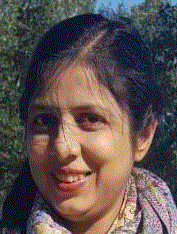ACM computing curricula series published a report on December 31st, 2020, targeting the state-of-the-art in computing education and practice. The report also provides insights into the future of computing education for the 2020s and beyond [1]. The main target area is to develop academic programs that grant baccalaureate-level degrees (BS) in computing as well as propose a vision for future curricular guidelines. The participating societies that prepared this report are the Association for Computing Machinery (ACM) and the IEEE Computer Society (IEEE-CS) along with some other organizations including the Association for Information Systems (AIS) and the Education Special Interest Group of Information Systems and Computing Academic Professionals (EDSIG/ISCAP), and the ACM Special Interest Group for Computer-Human Interaction (SIGCHI). The main collaborators of the project are the Information Processing Society of Japan (IPSJ), the Chinese Computing Federation (CCF), the Latin American Center on Computing (CLEI), ACM India, Informatics for All, and Informatics Europe. The report targets main three stakeholders i.e., current students, industry, student guardians and professional and academic bodies. The ACM report's main target is the following discipline
1. Computer engineering (CE)
2. Computer science (CS)
3. Cybersecurity (CSEC)
4. Information systems (IS)
5. Information technology (IT)
6. Software engineering (SE)
7. Data Science (DS)
The report also emphasizes the introduction of some new courses concerning time in all the above disciplines. The major courses that should be part of each degree program are cloud computing, smart cities, sustainability, parallel computing, internet of things, and edge computing. The top ten emerging computing trends are (a) deep learning (DL) and machine learning (ML), (b) digital currencies, (c) blockchain, (d) industrial IoT, (e) robotics, (f) assisted transportation, (g) assisted/augmented reality and virtual reality (AR/VR), (h) ethics, laws, and policies for privacy, security, and liability, (i) accelerators and 3D, and (j) cybersecurity and artificial intelligence (AI). All these areas have some coverage within existing curricula guidelines, and some areas (e.g., cybersecurity) even have their own formal guidelines. Other areas include 3D graphics and accelerators.
This blog compares the circulars of BS computing degree programs in Canada and Pakistan. It compares only BS computer science degree programs in Pakistan and Canada [2][3].
|
Course Group |
Canada (Cr.H) |
Pakistan (Cr.H) |
|
General Education |
27 |
19 |
|
University Elective |
18 |
12 |
|
Math and Science |
6 |
12 |
|
Computing Core |
33 |
39 |
|
Domain Core |
6 |
24 |
|
Domain Elective |
18 |
15 |
|
Domain Supporting |
6 |
9 |
Higher Education Commission of Pakistan is following the ACM 2013 curriculum report as compared to Canada and the USA which is following ACM 2020 reports.
The major difference in BS program design is the difference in course selection as well as total credit hours. The Bs(CS) program offered in Canada has a minimum of 90 credit hours and a maximum of 120 Cr. H, while in Pakistan, they are from 130 to 134 Cr.H.
1. All Computing core courses are the same in Canada and Pakistan except the three courses. The courses that are not part of the Canada BS computing program are Discrete structure, Computer Networks and information security.
2. In Canada, the BS in Computer Science includes just two technical courses focused on writing skills: Technical Writing and Communication, and Social and Ethical Dimensions of Information and Communication Technologies. In contrast, Pakistan offers four courses that emphasize communication skills, technical writing, and additional social and regional aspects.
3. Students have more opportunities in Canada and a longer list of electives available from their degree program. They may choose from Web development, mathematical computation, Software engineering, Game development, and Data Analytics.
4. List of computing courses and university electives offered by the university and students have more rights to choose from universities across Canada.
5. List of courses associated with building language skills have equal credit hours in Pakistan and Canada.
6. More general education courses are offered in Pakistan that help to improve their interpersonal skills.
7. Computing Core courses are more common in Pakistan. Some of them are mandatory, helping to improve skills like web development and game development. These courses include databases and computer networks. However, they are not compulsory and are part of the elective stream if students of computing courses select the data analytics domain.
8. The Higher Education Commission of Pakistan can improve the BS computing program by following the ACM 2020 computing guidelines.
9. The Engineering Research Council of Canada designed BS computer science in a way that students can get admission in Bs Hons (CS) to any public university if they complete a 2-year BS program with a CGPA of 3.0 or above. However, students may get admission to public universities in Pakistan after completing their higher secondary school.
10. The average time to finish an undergraduate program in Canada is 3 to four years [4].
11. Some students need to complete 150 credit hours in the Bs program in case they have completed secondary school outside of Quebec. This requires the completion of 30 credits in addition to the regular 90 or 120 credit hours [5].
References
[1]https://www.hec.gov.pk/english/services/universities/RevisedCurricula/Pages/default.aspx
[3] https://cmps.ok.ubc.ca/undergraduate/computer-science/
[4] https://www.concordia.ca/academics/degrees/program-length.html
[5] https://www.concordia.ca/academics/degrees/program-length.html#ecp

